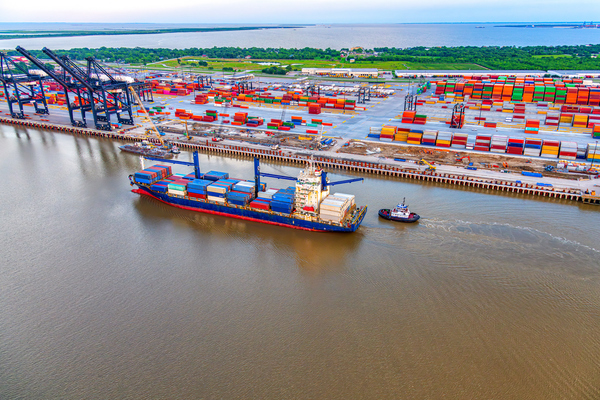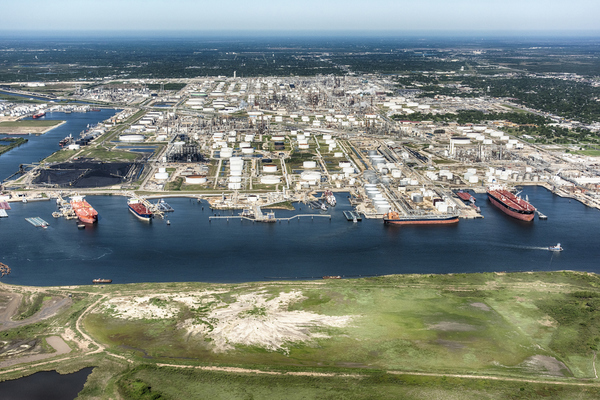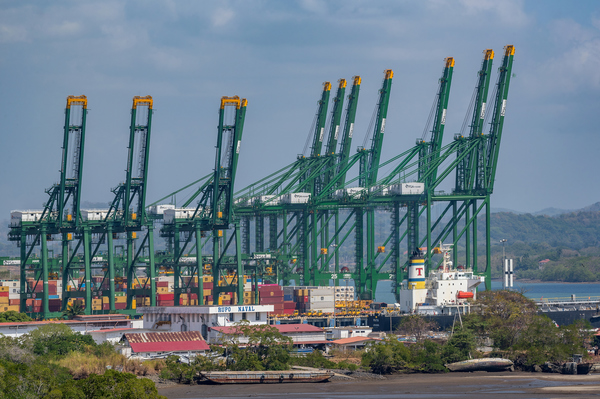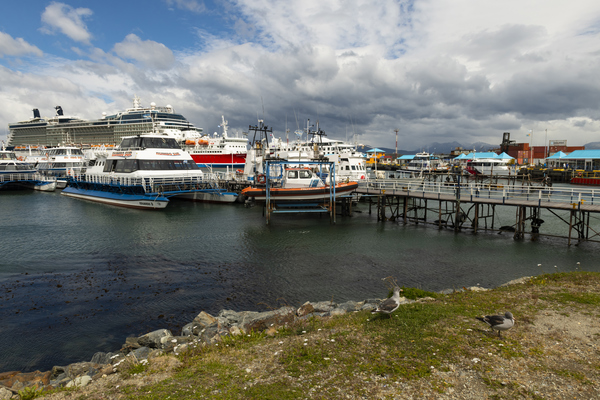Long Beach and Los Angeles ports report lower emissions
Ports of Long Beach and Los Angeles have recorded significant reduction in their emissions across all categories in 2022.
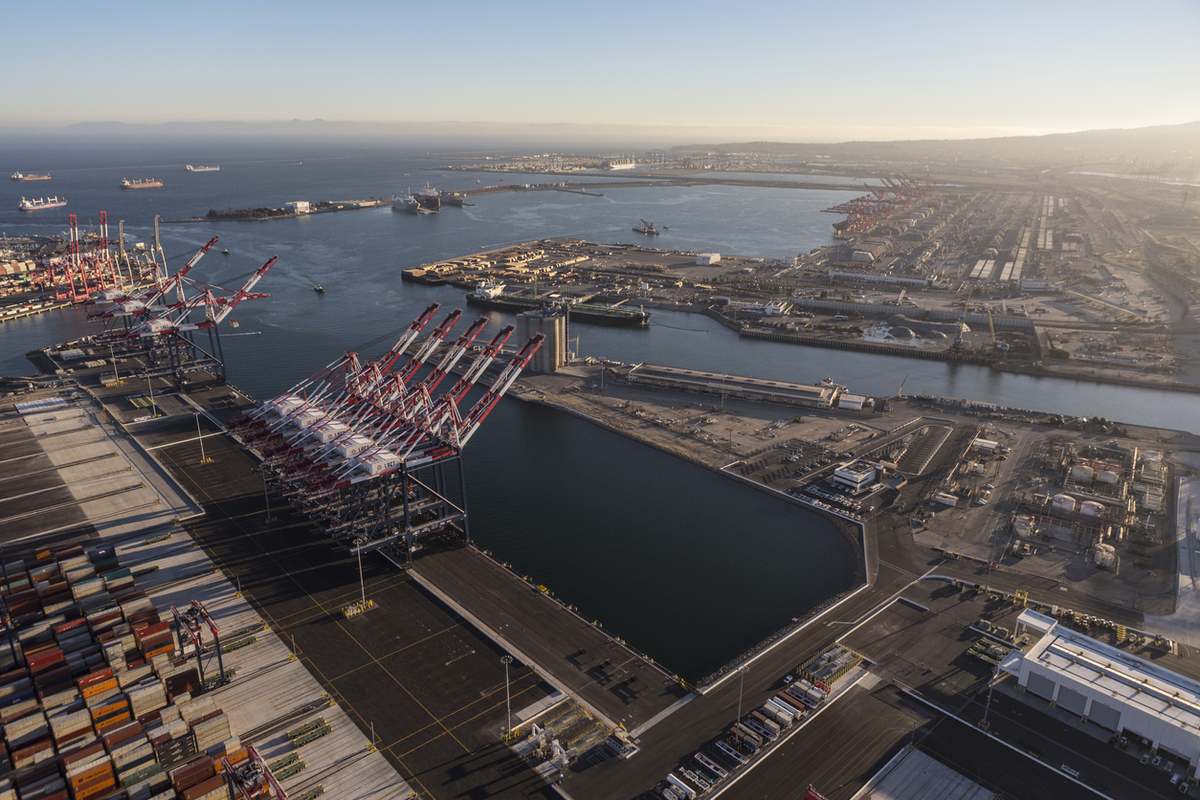 PHOTO: Afternoon aerial view of the ports of Long Beach and Los Angeles in southern California, US. Getty Images
PHOTO: Afternoon aerial view of the ports of Long Beach and Los Angeles in southern California, US. Getty Images
In the Port of Long Beach, emissions of diesel particulate matter dropped by 91%, nitrogen oxides (NOx) by 63% and sulphur oxides (SOx) by 97% in 2022 compared to 2005 levels, according to the port’s annual emissions inventory report. 2005 was chosen as the baseline level as it is the year before the San Pedro Bay Ports Clean Air Action Plan (CAAP) was adopted.
In the same time frame, the port's cargo container volume surged by 36%.
The CAAP was implemented in 2006 by the ports of Long Beach and Los Angeles to significantly reduce the health risks posed by air pollution from port-related activities, which covered operations of ships, trains, trucks, terminal equipment and harbour craft.
The initiatives taken by the Port of Long Beach to ease congestion and reduce emissions from landside operations contributed to bringing down emissions in 2022, the port authority said.
The 2022 emissions results also showed a significant improvement over 2021, with diesel particulates and NOx falling by 28%, and SOx by 7% in 2022. “The COVID-19 pandemic and global supply chain congestion resulted in higher emissions in San Pedro Bay” in 2021, the port authority noted.
Meanwhile, total greenhouse gas (GHG) emission, was down by a meagre 1% in 2022 compared to the 2005 baseline. But it was down 16% from 2021.
The Port of Los Angeles too recorded reduction in emissions
The port’s new 'Inventory of Air Emissions' report showed that emissions of diesel particulates, NOx and SOx declined by 88%, 62% and 97%, respectively, in 2022 compared to 2005 baseline.
Compared to 2021 levels, emissions of diesel particulates, NOx and SOx dropped 31%, 34% and 47%, respectively, in 2022. “Emissions increased in 2021 due to the pandemic-induced cargo surge that strained the nation’s supply chain,” the port authority said. An unprecedented increase in vessel calls and cargo volumes made 2021 an outlier year for the port.
“Reduction in ships at anchor and the port’s ongoing environmental initiatives” were the primary factors that brought down emission levels in 2022. Containership arrivals slumped 41% in 2022 compared to the previous year. “Fewer ships delivering more cargo” is one of the measures that helped the port in bringing down emissions.
GHG emissions fell 22% in 2022 compared to the previous year and 4% compared to 2005.
Both ports focused on reducing emissions further
The Port of Long Beach aims to achieve “zero-emissions cargo handling by 2030 and zero-emissions trucking by 2035,” said Long Beach Harbor Commission’s president Bobby Olvera Jr.
The port’s efforts to reach these goals include:
- The port has successfully secured funding worth $331 million, which includes $225 million from the California State Transportation Agency, for zero- and near-zero emissions projects.
- The port has created Zero Emissions, Energy Resilient Operations Program (ZEERO) to invest “in projects aimed at reducing the impacts of [port] operations and improving air quality.”
- It revealed plans to develop Pier Wind - a facility to house an assembly of offshore wind turbines.
- Last year, the port joined the Alliance for Renewable Clean Hydrogen Energy Systems (ARCHES), a public-private partnership to create a renewable hydrogen market in California.
Meanwhile, the Port of Los Angeles aims to eliminate remaining emissions of diesel particulates, NOx and SOx, and reduce GHG emissions “40% below 1990 levels by 2030 and 80% below 1990 levels by 2050.”
“Transitioning all cargo handling equipment to zero emissions by 2030 and all drayage trucks calling at marine terminals to zero emissions by 2035” are some of the key measures being pursued by the port to reach these goals.
To reduce GHG emissions from ships, the port is also collaborating with its trans-Pacific partners that include “some of the world’s busiest ports in Asia” to develop green corridors and decarbonise shipping.
To this end, in July, the Port of Los Angeles and Japan’s Nagoya signed another agreement on top of their 2020 deal to expand collaboration on sustainability and set up a green shipping corridor between the two ports.
In April, the Port of Los Angeles, Port of Long Beach and Maritime and Port Authority of Singapore (MPA) inked a deal to establish a green corridor between Singapore and ports in the San Pedro Bay complex in California.
By Tuhin Roy
Please get in touch with comments or additional info to news@engine.online

Contact our Experts
With 50+ traders in 12 offices around the world, our team is available 24/7 to support you in your energy procurement needs.

